Blog


The Christmas List that Continues to Speak to My Heart
Some family Christmas traditions carry over easily from generation to generation, and some don’t. Here’s one tradition I tried passing on to my children, and how it has played out. It reminds me that traditions themselves can be unexpected–which ones have staying power and how each generation reshapes heritage in its own way.
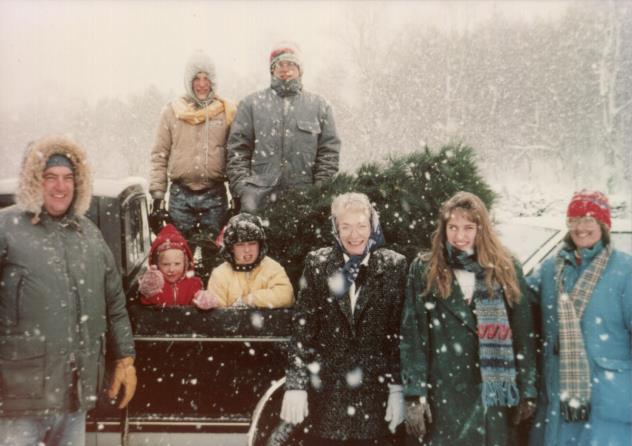
That’s me in the green coat, between my grandma and my mom. My dad stands on the left, with my four younger brothers in the back of the truck.
I grew up with several family Christmas traditions: making candy cane cookies, tromping through the snow to cut a live tree and, on Christmas Eve, re-enacting the Nativity with my brothers as my dad read from the Bible. Over the years, my husband and I have tried several of these traditions. Some traditions have translated well into our lives, and some haven’t. (Though I loved it as a child, the year I walked a mile into the woods in heavy borrowed boots while pregnant was my last for cutting a live tree.)
One holiday tradition that has rooted itself in my children’s lives surprised me. It’s not exciting or tasty. Yet they have adopted it fully–and they’ve even started documenting it.
A family Christmas tradition that lives on
My mom always loved putting up the Christmas tree. She planned a made-for-memories event each year, hoping to have joyful carols, hot chocolate and pictures worth putting in the Christmas letter. What she got from me and my five brothers was usually less idyllic. We sang plenty of carols, loudly, but they were more likely to be “Grandma Got Run Over by a Reindeer” than “Silent Night.” Pictures always had someone sticking out a tongue or elbowing a brother. And my mom often had to wrangle us into putting up the tree and stringing up the lights first, which was guaranteed to make some of us grumpy.
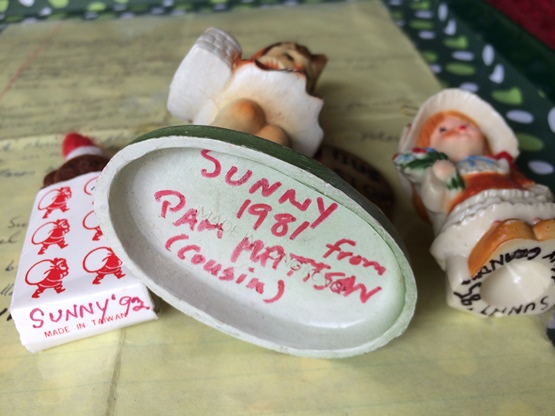 But every year, my mom made sure we each had a new ornament to hang on the tree. Sometimes she made or bought it. Sometimes another relative sent us ornaments. I don’t know how she always had these ornaments amidst the chaos of Christmas preparations for six children. But she did it. She even labeled them with our names and the year.
But every year, my mom made sure we each had a new ornament to hang on the tree. Sometimes she made or bought it. Sometimes another relative sent us ornaments. I don’t know how she always had these ornaments amidst the chaos of Christmas preparations for six children. But she did it. She even labeled them with our names and the year.
When I left home, she gave me a box of my ornaments–along with a list, year by year, of which ornaments we received and extra notes about some of them:
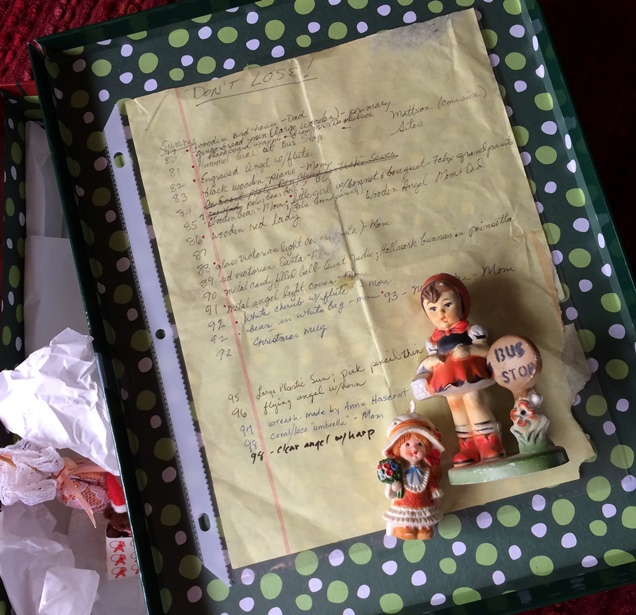
About six years ago when decorating our tree with my husband and children, I pulled out my box of childhood decorations with my mother’s list in it. For some reason, that year, her list especially spoke to my heart. I knew I wanted to do this for my own children. So I divided up the ornaments I’d given Jeremy, Alex, and Seneca over the years. I added a couple of ornaments for years that didn’t have them. I started lists. They weren’t fancy lists: just a piece of notebook paper, like my mom’s on yellow legal paper. I figured if I waited until I found holiday stationery, it would never happen.
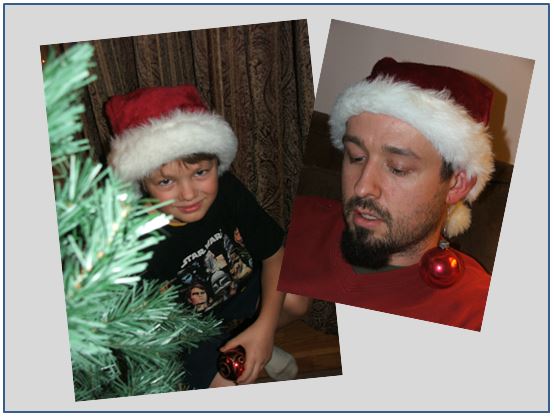 The following year, I presented my children with cute boxes for their ornaments. I slid my lists into sheet protectors and taped them inside each box. They were actually delighted to hang their own ornaments! No cajoling was necessary.
The following year, I presented my children with cute boxes for their ornaments. I slid my lists into sheet protectors and taped them inside each box. They were actually delighted to hang their own ornaments! No cajoling was necessary.
In fact, we had so much holiday cheer that my husband decorated his ear with an ornament. My oldest son Jeremy began snapping pictures. Seneca launched herself at Jeremy, Alex pounced, and they all dissolved into a pile of giggles on the floor, their Santa hats somehow still intact.
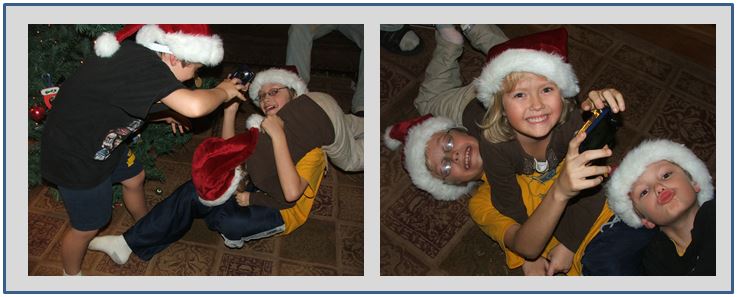
Since then, the kids have gone looking for their own boxes of ornaments each year. Some years I am more prepared than others: this year, they will get their 2017 ornaments on Christmas Eve.
I love that my children have come to own this tradition. Alex has actually begun documenting his new ornaments himself. You can see how he picked up where I left off:
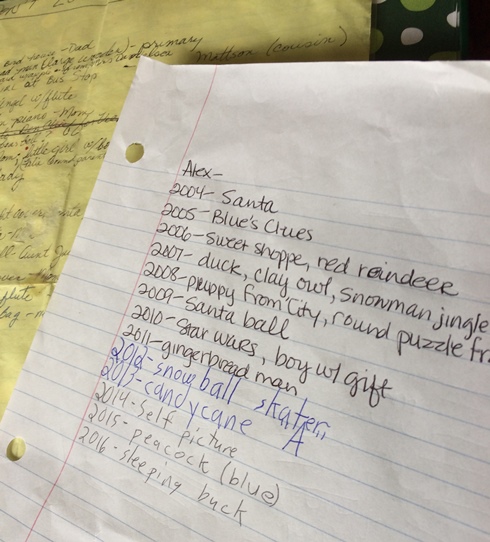
Now that I’m a mom, I can’t help but look at my mom’s list a little differently. It’s a chronicle of a mother’s love, steady and shown in little things and relatively unappreciated. Across the top of her list, she wrote, “DON’T LOSE!” She was probably thinking of her carefree young adult children who might not appreciate this box of ragtag ornaments and what it represented to her. Today, I think her message is more than a warning not to lose the ornaments she so carefully tracked and packed away each year. It’s about never losing hold of her love for us–the heritage that matters most.
In our family, at least, the adoption of any tradition is a little messy and uncertain, especially now that I have teenagers. I never know whether’s it’s going to “take,” who’s going to roll their eyes or rebel, whether they will feel and respond to the message behind the time we spend together and the rituals we create. My solution is to try a lot of traditions. To not be afraid to change things up to suit my own little band of a family–even to create new traditions on the fly. To be flexible with my expectations–they may very well wrestle instead of sing “Silent Night” as they hang their ornaments, and that’s fine. As long as they are laughing and creating memories of the ways their family shared its love.
May you enjoy creating or reliving your own holiday traditions this year! Feel free to share any with us on the Genealogy Gems Podcast Facebook Page.
Merry Christmas to your family from mine, and from all of us here at Lisa Louise Cooke’s Genealogy Gems.
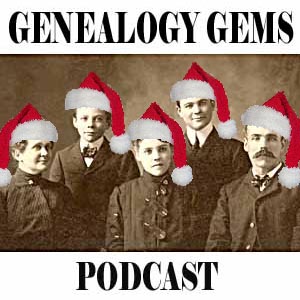
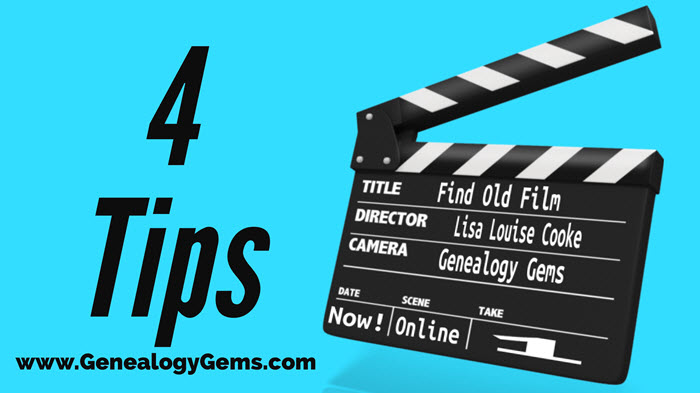
Find Old Film Footage Online: YouTube and Google Video Search
Old film footage can make your family stories truly unforgettable–even for those relatives who seem to forget every fact you tell them about your genealogy! Follow these tips to find old film footage and video online.

If a picture’s worth a thousand words when you share your family history, how much more do you think a video is worth?
A while back, we told the gripping story of Betty McIntosh, a Honolulu reporter-turned-World War II spy. What fun it was to research and share on the blog! The post has multimedia sources threaded throughout: an image of a young Betty from the CIA’s website, news articles, oral histories with more memories of Pearl Harbor, a YouTube video interview with Betty, and even a dramatic radio broadcast clip from the day of the attack, when the media was trying to reach the mainland with news of the attack.
We found all those sources via Google searching. And while we could go into great depth on how to find each of those kinds of sources (and I do, in resources such as my book, The Genealogist’s Google Toolbox), in this article, I wanted to share some tips on finding old film footage online, using Betty as a case study. Think about how you might use these tips to look for old video or films related to your family history–and let me know what you find! I’d love to hear from you.
How to find old film footage online: 4 tips
1. Search for your topic on YouTube, the world’s largest video-sharing website. My book The Genealogist’s Google Toolbox has an entire chapter devoted to YouTube searches for family history, so I won’t go into great depth here. I will tell you to think of search terms that pertain to the family history stories you want to share: a person’s name, a place, an event in history, or even an occupation or industry. Enter those search terms at YouTube.com.
Betty lived in the 20th century and was recognized publicly for her work during her own lifetime. So there was a good chance that old film or video would exist about her. And they do! A YouTube search brought up video interviews with her, such as this one:
2. Repeat the searches on Google. YouTube searches can only bring up what’s actually been put on YouTube. Google searches are much wider, across millions of websites, and you may find some other wonderful resources. When your Google search results come up, click Videos to narrow your results:
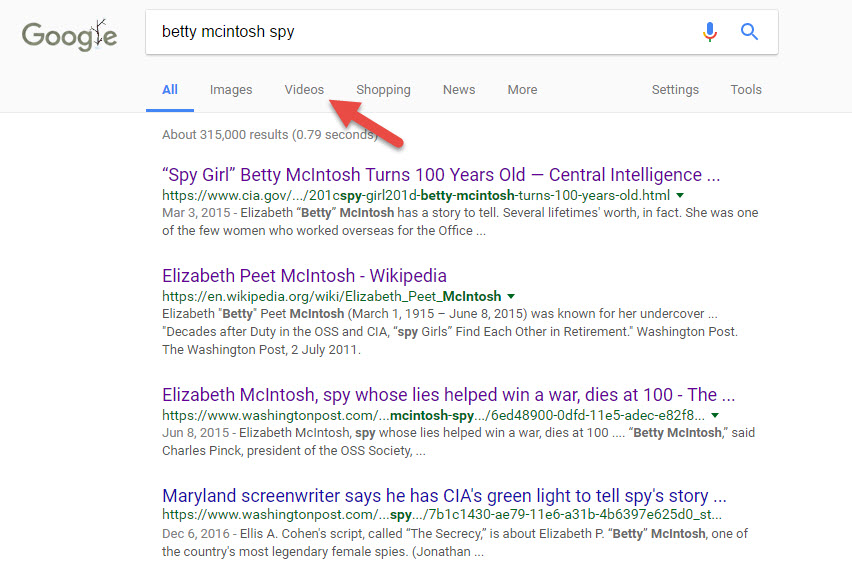
You’ll have some duplication with results from YouTube. In the case of Betty McIntosh, I found two additional videos that didn’t come up on YouTube. One of them was at NBC News.com and the other was an hour-long interview on C-Span!
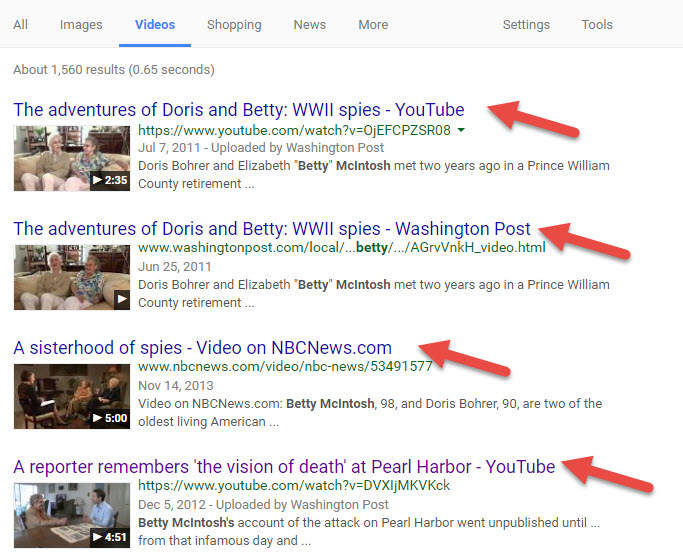
3. Run multiple searches on both Google and YouTube. Repeat your searches with various search parameters to broaden or narrow your results, or to capture different kinds of results. In Betty’s case, keywords such as spy and reporter were important to filter out unwanted results.
Remember that Google and YouTube aren’t specifically designed for searching for name variants like your favorite genealogy website is. So these sites may not recognize nicknames or other name variants, such as “Elizabeth” instead of “Betty.” Also search by surnames only, maiden and married names and even initials. Here’s a quick video tutorial I did on using asterisks to search for name variations on Google:
4. Pay attention to copyright restrictions if you want to share old film footage, such as if you’re making your own family history video. For example, I found these copyright restrictions for using C-Span video (noncommercial use is allowed and there’s even a handy video clipping tool right on the site if you want to clip part of it and save it).
More on YouTube for Family History: Get Inspired!
6 Tips for Using YouTube for Family History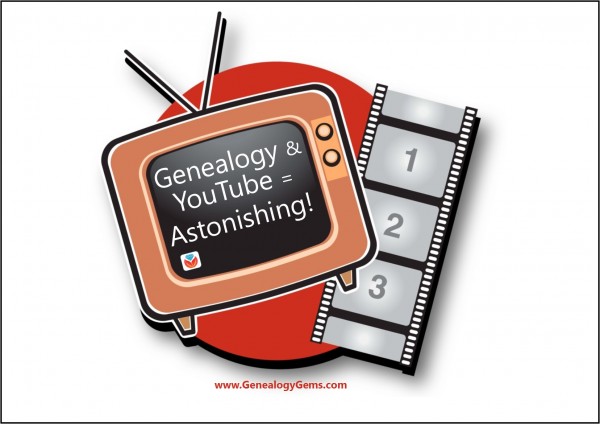
History documentaries online can help you understand your family’s story
My Most Amazing Family History Find Ever–and It’s On YouTube
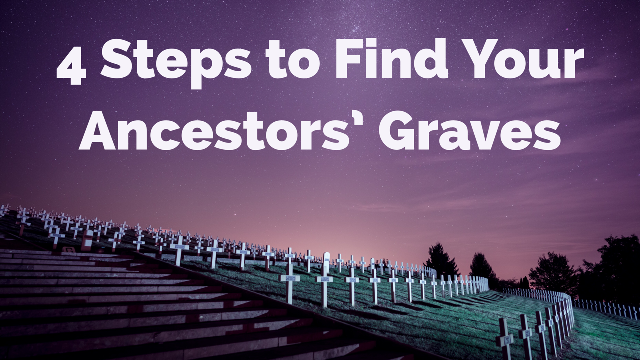
Cemetery Research for Genealogy: 4 Steps for Finding Your Ancestors’ Graves
Cemetery research is a crucial family history skill. Tombstones are monuments to our ancestors lives and may have key genealogical clues engraved in the stone. Follow these four steps to finding your ancestors’ burial places and the records that complement them.

Many of my ancestors are buried just two miles from my house in Round Hill Cemetery in Marion, Virginia. I drive by the cemetery each day, as I take my daughters to school. I never pass by without glancing up at the hallowed ground which holds the remains of those who came before me. The sun perfectly illuminates their resting place each morning and a majestic tree stands at the very top of the hill–a living monument to the lives they led in the town where I now raise my own family.
It is an emotional experience to stand in the place where an ancestor’s remains have been laid to rest.
Each time I visit the grave of my grandma, I have a vision of a family standing around a casket on a bitter cold day in March. It was a just few days before the official start of spring, but it was the dead of winter to me. That ground is sacred to me, now.
Each time I visit, I am transported back in time to that day. A wound is re-opened for a moment, but the moment is fleeting because I quickly remember her life, not her death.
I remember the stories she told, the service her hands rendered to her family and, most importantly, the love that transcends time and even the icy grip of death. Death truly loses its “sting” as we stand before a monument of stone and see beyond to the life it represents. Scenes like this one have played out at each grave.
I am reminded of this quote from Fear Nothing, a Dean Koontz book, whenever I visit the cemetery:
“The trunks of six giant oaks rise like columns supporting a ceiling formed by their interlocking crowns. In the quiet space below, is laid out an aisle similar to those in any library. The gravestones are like rows of books bearing the names of those whose names have been blotted from the pages of life; who have been forgotten elsewhere but are remembered here.”
I have often gone to my ancestors’ resting places to take pictures of headstones and search for relatives I may have missed in the past. It seems like each time I visit, I notice something new.
This library of marble holds many clues that have helped me break down brick walls in my family history research. These clues have been there, etched in stone, for decades. It wasn’t until I recognized how to read the clues that I began to understand the importance of cemeteries in family history research.
These resting places have become much more to me than merely a place to go and offer a bouquet of flowers. There are answers waiting to be discovered. The key to getting the answers is knowing which questions to ask.
In my experience, the best genealogists are not the ones with the best cameras, the best software, or the best gadgets–they are the ones with the best questions.
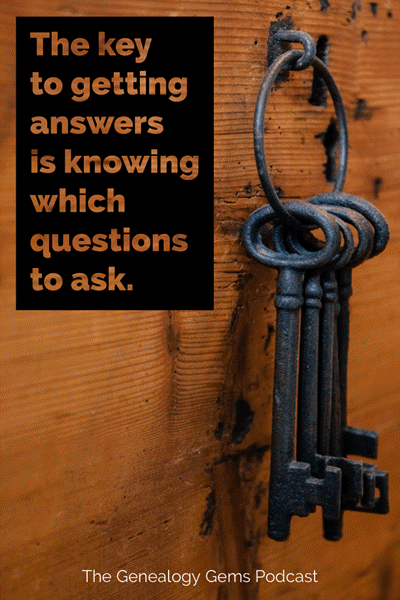
Curiosity is the most important tool to the successful genealogist. The next time you find yourself in a library of marble, take a few moments to let your curiosity run wild. Ask yourself:
- “Who are the people surrounding my family members?
- What are their stories?
- What do the etchings on their headstones mean?”
That curiosity will lead to the most remarkable discoveries and you will see for yourself how a piece of marble truly can break down a brick wall.
Below I’ve outlined the steps for finding family cemeteries and which questions you should be asking when you get there. Get inspired by my own examples of breaking down brick walls, and implement these methods I used for your own success!
Cemetery research step #1: Identify the cemetery
The first step in cemetery research is to identify the name of the cemetery where an ancestor was buried.
The best places to start looking are death certificates, funeral home records and obituaries. Each one of these records should contain the name of the cemetery where a family member was buried.
We sometimes fail to look beyond the names and dates on death certificates. If we get in the habit of taking the time to absorb all of the information on these important documents, we will find genealogical treasure.
Sometimes, the death certificate will not give us the name of the cemetery.
This was the case with my great-grandmother, Mollie Weimer Overbay. I was frustrated to see that the death certificate only indicated that she was buried, as opposed to cremated or removed to another location. While the certificate did not provide me with the name of a cemetery, it did offer the name of the funeral director: W.B. Seaver.
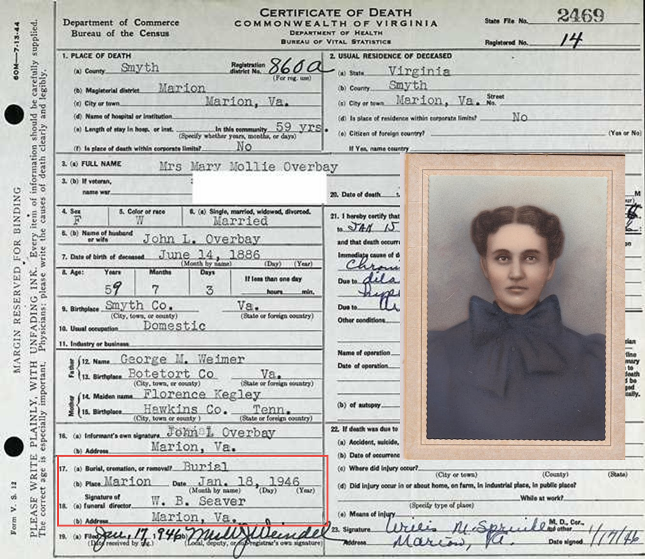
Luckily, I was able to follow this lead to the local funeral home. Within their records, I discovered that she was buried in Round Hill Cemetery, along with many of my other ancestors.
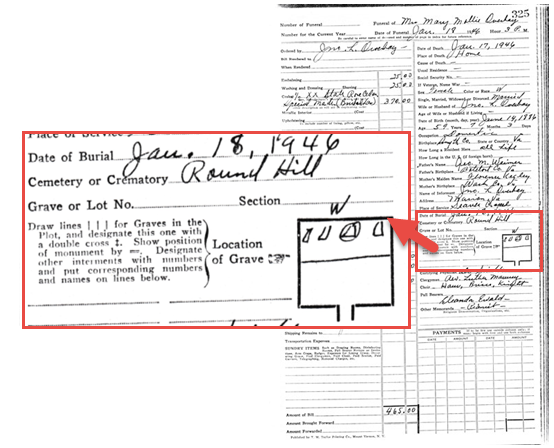
Cemetery research step #2: Locate the cemetery
Once you have located the name of the cemetery, several resources can guide you to its location.
Three helpful websites are listed below. Which you choose may depend on personal preference or familiarity but also on which site seems to have more records for the locales of most interest to you.
1. One of my favorite online resources is Find A Grave.
This website allows you to search for cemeteries all over the world.
At the home page, click on the Cemeteries tab (#1, below).
Then enter the name or location of the cemetery (#2). In the screenshot below, you can see part of the Google Maps interface that shows you the exact location of the cemetery, should you want to visit in person:
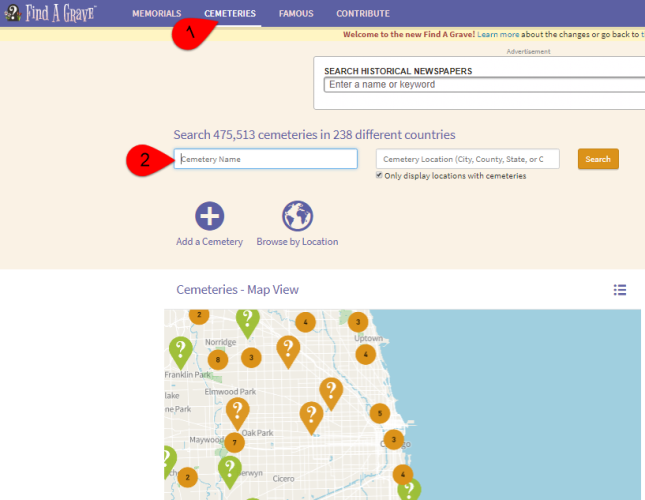
Find A Grave also has pictures of many of the headstones located within cemeteries.
2. 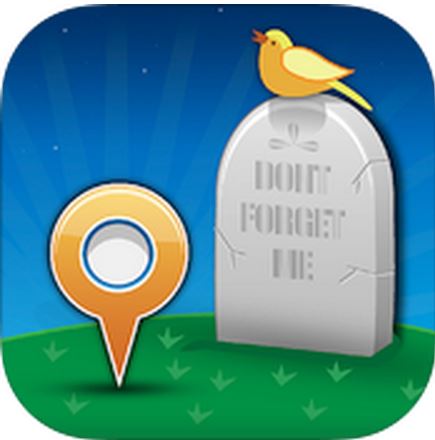 Billion Graves allows users to collect photos of headstones by using an iPhone/Android camera app.
Billion Graves allows users to collect photos of headstones by using an iPhone/Android camera app.
The app, available on Google Play and the App Store (for iPhone and iPad), tags the photos with the GPS location and, essentially, maps the cemetery as headstones are added.
Search for cemetery locations using the Billion Graves app or on the website by selecting the “Cemetery Search” option and then entering the name of the cemetery or a known address (to see it on Google Maps):

3. Interment.net can also be helpful.
From the home page, scroll down just a little until you see “Browse Cemetery Records by Region.” This can be especially helpful if you’re looking for all records within a specific county or other region. However, it’s not quite as useful if you’re trying to locate all cemeteries within a certain radius of a location, regardless of local boundaries.
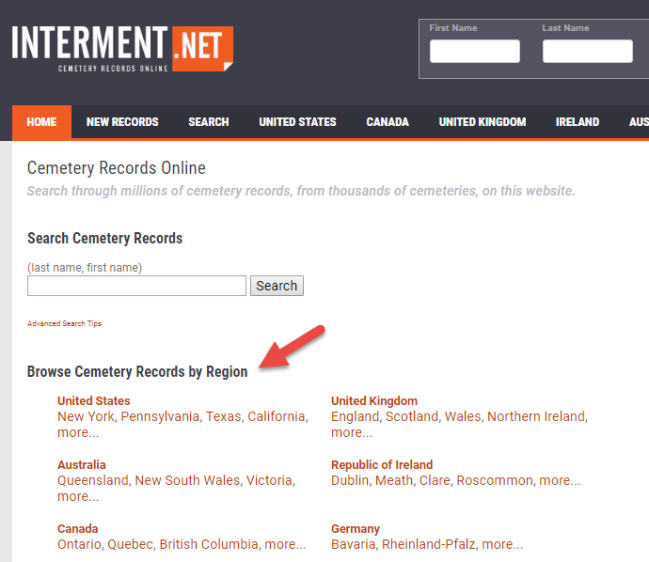
In addition to these resources, it is essential to contact the local library, genealogical society, and/or historical society where your ancestors are buried. These organizations are well-known for maintaining detailed listings of local cemeteries within their collections.
For instance, within Smyth County (where I live) there is a four-volume set of books that contains the work of two local historians, Mack and Kenny Sturgill. They spent several years mapping local cemeteries and collecting the names on all of the headstones.
Although these books were completed in the 1990s, the information is still valuable to genealogists. Detailed driving directions were given to help future researchers locate cemeteries that would otherwise be difficult to locate. Many of them are on private property and even in the middle of cow pastures or wooded areas.
Furthermore, some of the headstones that were legible in the 1990s have now become difficult to decipher due to weathering or have altogether disappeared. It is likely that the counties in which you are conducting cemetery research offer similar resources.
Cemetery research step #3: Prepare for a visit
Once you have found the cemetery you want to visit, you will want to take the following items along with you to make the most of your visit:
- a camera
- pair of gloves
- grass clippers
- notebook and pen
- long pants
- sturdy shoes
You may also want to use a damp cloth to bring out the carvings on headstones. A side note: if you are like me and have an aversion to snakes, you will either choose to go on cemetery expeditions during the winter, or you will invest in a pair of snake chaps.
Get more help! The Family Tree Cemetery Field Guide (above) contains detailed step-by-steps for using FindAGrave and BillionsGraves, plus guides for understanding tombstone epitaphs and symbol meanings.
Disclosure: Genealogy Gems is a participant in the Amazon Services LLC Associates Program, an affiliate advertising program designed to provide a means for sites to earn advertising fees by advertising and linking to Amazon.com. Thank you for supporting our free podcast by using our link.
Cemetery research step #4: Visit and search for clues
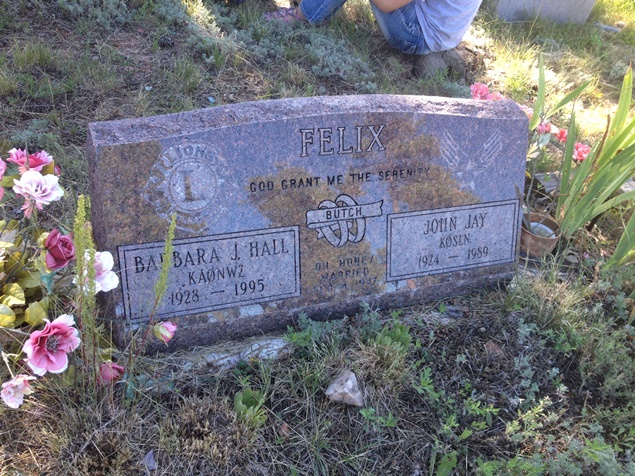
This headstone shows something unusual: the couple’s ham radio call signs (the codes engraved just below their names).
The headstones found in cemeteries can reveal much about your family. You will find more than birth and death dates. If you look closely, you will discover symbols related to military service and religious beliefs, maiden names of the women in your family, and you may even find family members that you never knew about. Many times, you will find children buried in the family plot. Look around to see who is buried near your ancestors. It is likely that you will find connections to other family members when you are visiting the cemetery. These connections may lead you to break down long-standing brick walls within your family history.
In my own experience, there have been several instances in which cemetery research has helped shed light on a family mystery. I had grown up hearing that there were members of our family who had fought in the Civil War. Who were these men? What experiences did they have during the war? Where had they fought?
The answers to these questions came as the result of a visit to the cemetery. I had gone to Round Hill Cemetery to photograph the headstones of my Weimer ancestors. As I worked my way down the row, I encountered an unfamiliar name—William Henry Wymer. At the top of his headstone, there was a Southern Cross of Honor—a symbol used to denote a soldier who fought during the Civil War. Below his name was the following inscription: “Co. A, 6 VA RES, C.S.A:”
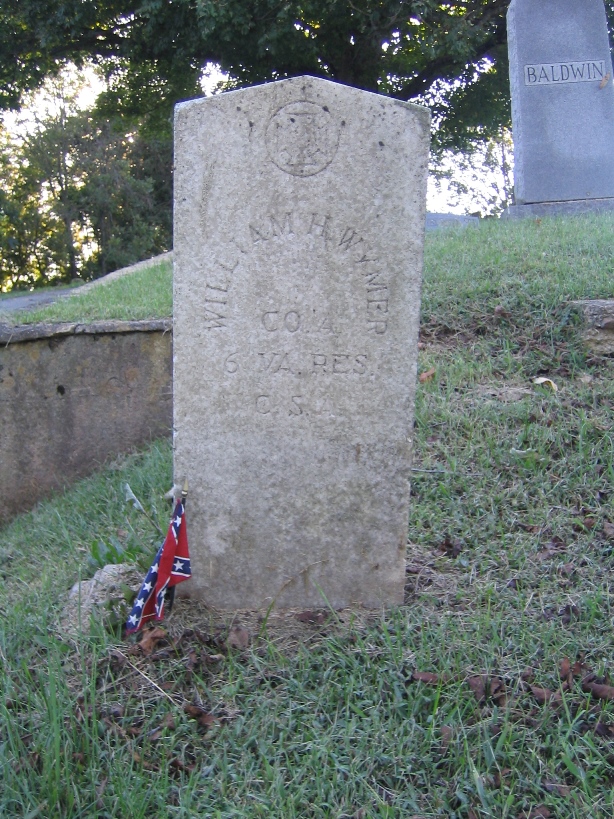
When I went home that afternoon, I began to search for more details. With some census research, I learned that he was the uncle of my great-grandmother, Mollie Weimer Overbay. Upon confirming his relationship to our family, I began searching for a pension application for his wife, Rhoda:
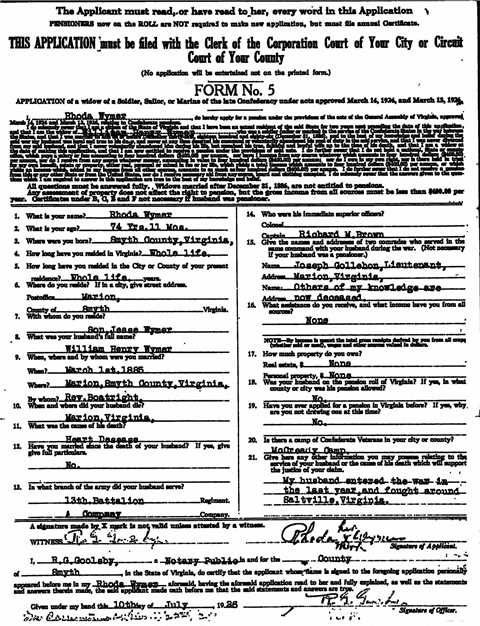
The application had been submitted in 1926 and told the story of William’s life. Among other things, I learned the answers to my questions about his service during the Civil War. His wife indicated that he enlisted during the last year of the war and was present during a well-known battle in our county—the Battle of Saltville. I am sure that my great-grandmother had grown up listening to tales of this battle and William’s experience during the war. The details of the story had been lost but were now re-discovered thanks to a trip to the cemetery.
Subtle clues like this one await you as you search out your own ancestors. The next time you make a trip to one of these libraries of marble, take a few moments to look closely at the clues that surround you. They may not be obvious, but they are there, waiting for your curiosity to uncover them. So, bring your cameras, your gloves, and your grass clippers to the cemetery on your next visit—but don’t forget to bring your questions and your ability to perceive the minute details, as you stand beneath the towering trees, among the rows of marble, waiting to offer up their long-held secrets.
More cemetery research tips
- Cemetery records: An alternative to death records
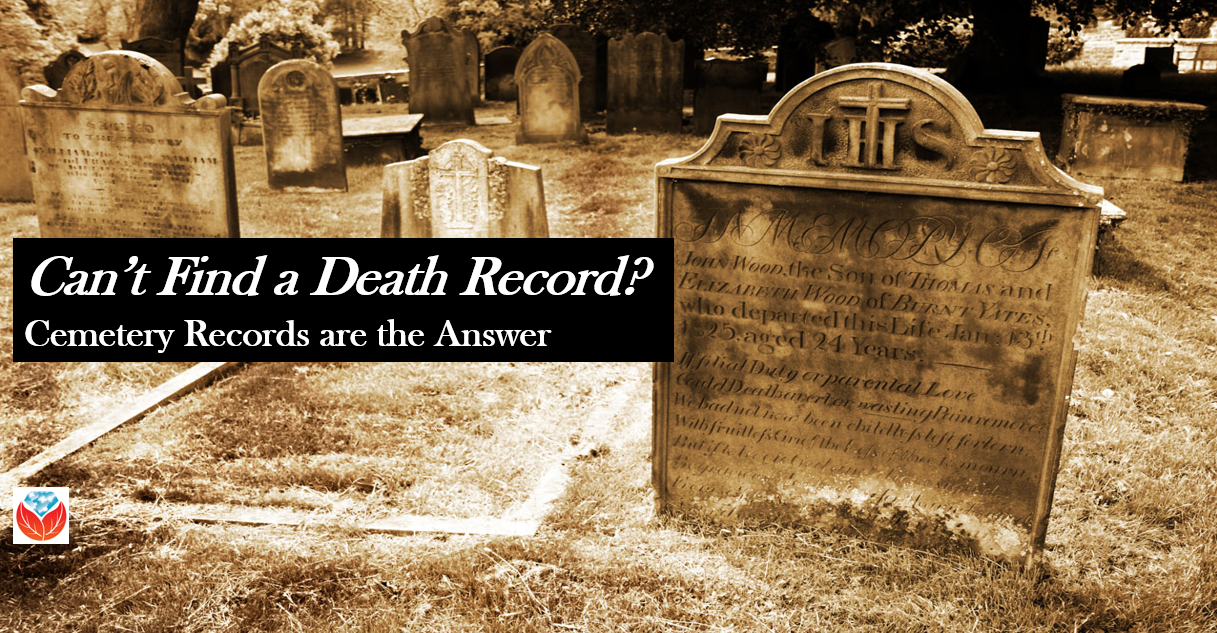
- How to find cemeteries in Google Earth
- How to read a faded tombstone without damaging the stone
Disclosure: This article contains affiliate links and Genealogy Gems will be compensated if you make a purchase after clicking on these links (at no additional cost to you). Thank you for supporting Genealogy Gems.





